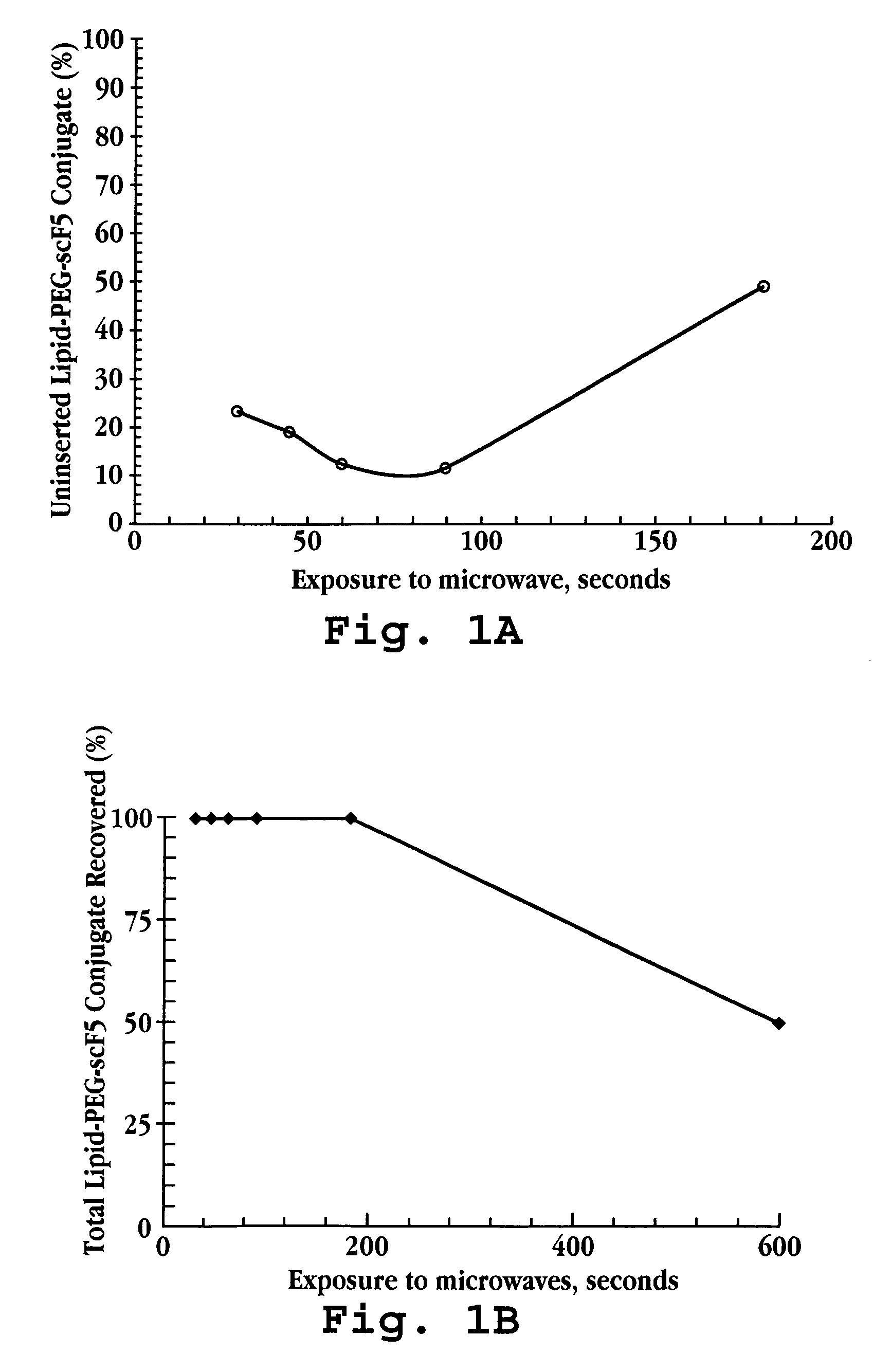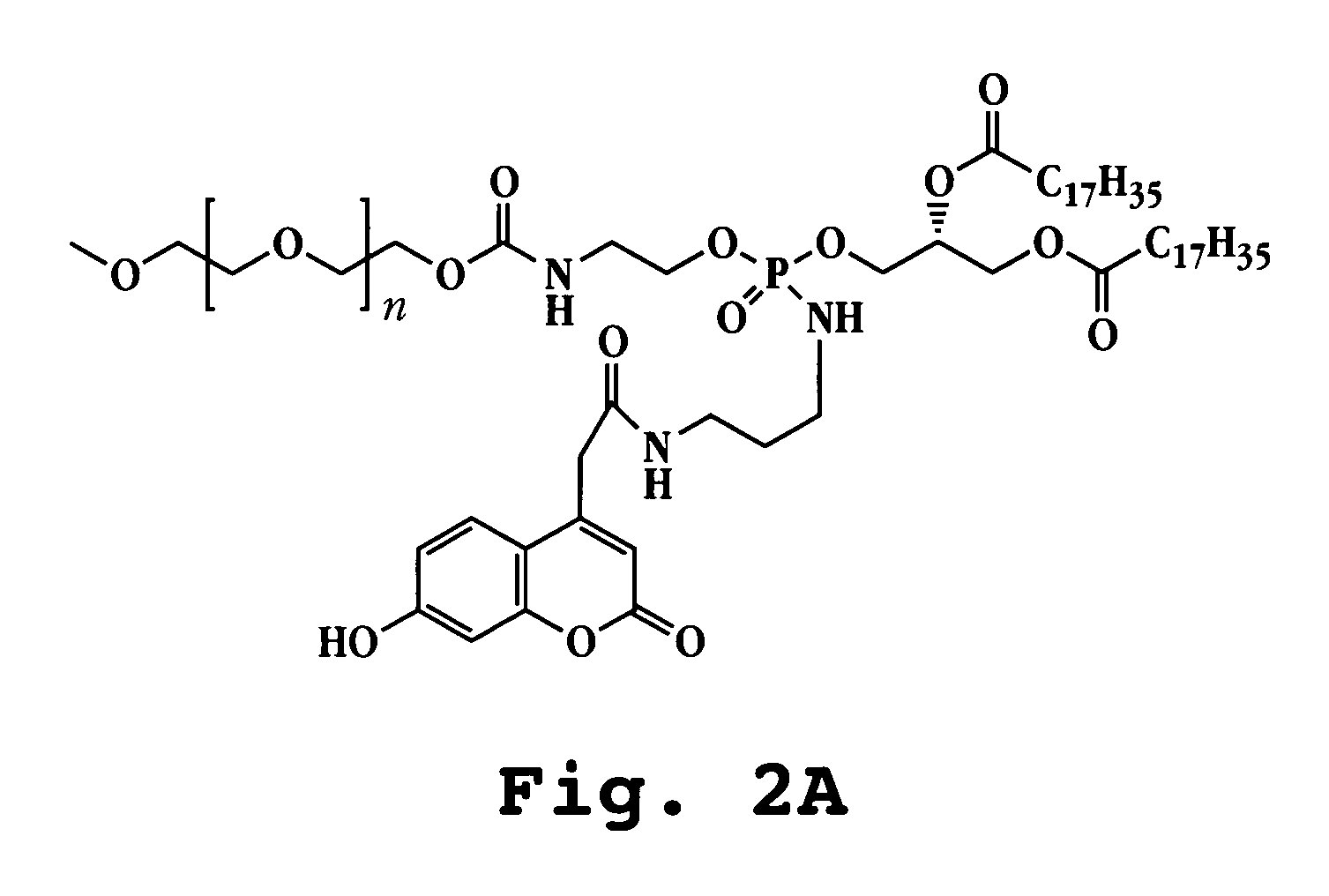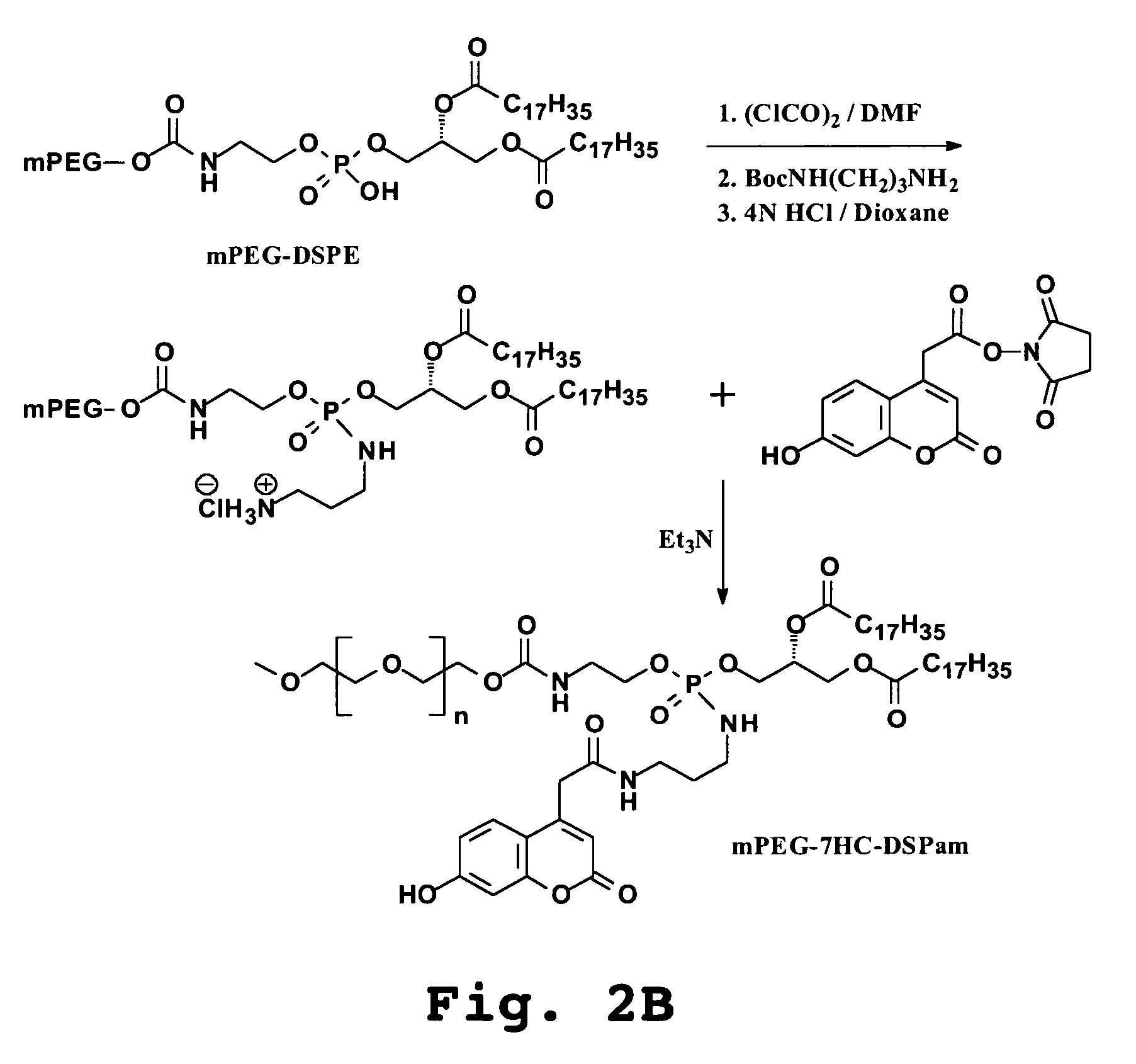Method of lipid structure preparation
a lipid structure and lipid technology, applied in the field of lipid structure preparation, can solve the problems of inactivation of ligand and/or release of liposomal contents, difficulty in reacting all activated ends with a ligand, and other limitations of the related ar
- Summary
- Abstract
- Description
- Claims
- Application Information
AI Technical Summary
Benefits of technology
Problems solved by technology
Method used
Image
Examples
example 1
Stability of Lipid Particles During Microwave Exposure
A. Liposome Preparation
Liposomes were prepared from partially hydrogenated soy phosphatidylcholine (HSPC), cholesterol, and methoxy(polyethylene glycol)-distearoylphosphatidyl-ethanolamine (mPEG-DSPE) (55:40:5 molar ratio) by lipid film hydration, followed by membrane extrusion (Gabizon, et al., J. Natl. Cancer Inst., 81(19):1484 (1989)). The lipids were dissolved in a choloroform / methanol mixture in a round-bottomed flask. Using a rotary evaporatory, the solvent was removed to form a thin lipid film. Multilamellar liposomes were formed by vigorous shaking of the lipid film in an aqueous solution of 100 mM ammonium sulfate and 1 mM deferoxamine. Liposomes were subsequently extruded stepwise through polycarbonate membranes with gradually decreasing pore sizes from 0.2 to 0.05 μm using a high or medium pressure extruder. Vesicles having a particle size of between 70-100 nm were obtained, as determined by dynamic light scattering.
Un...
example 2
Insertion of Lipid-Polymer-Ligand Conjugate into Pre-formed Liposomes
A. Conjugate Preparation
A lipid-polymer-ligand conjugate was prepared by reacting a single chain Fv (scFv) antibody fragment having binding affinity for c-erbB-2 receptor epitope (PCT / US99 / 07395, published as WO 99 / 55367) with a reactive PEG-DSPE conjugate, using previously described techniques (U.S. Pat. No. 6,180,134;
Zalipsky, S. et al., FEBS Lett, 353:71 (1994)). Briefly, distearolyphosphatidyl-ethanolamine (DSPE) and a heterobifunctional PEG derivative, N-hydroxy-succinimidyl-PEG-maleimide, are reacted to form a DSPE-PEG-maleimido conjugate. The malemido group at the free PEG end is reactive toward thiol moieties on the protein. The scFv antibody fragment is reacted with the DSPE-PEG-maleimido to form a DSPE-PEG-scFv conjugate.
B. Conjugate Insertion
Liposomes were prepared as described in Example 1A, but contained no doxorubicin. The pre-formed liposomes and a suspension of DSPE-PEG-scFv conjugate micelles were ...
example 3
Insertion of Fluorescent Lipid-Polymer Conjugate into Liposomes
A. Preparation of Fluorescent Lipopolymer Probe: DSPE-HC-PEG
The phosphoramide diester-linked conjugate of 7-hydroxycoumarin and mPEG-DSPE (FIG. 2A) was prepared according to the reaction scheme illustrated in FIG. 2B. mPEG-DSPE dissolved in dichloromethane was treated with oxalyl chloride and catalytic amount of DMF. The solution was evaporated to dryness and the residue redissolved in dichloromethane, cooled on ice and treated with triethylamine, 1-Boc-1,3-diaminopropane. After 15 min the reaction was complete. The solution was evaporated and the Boc-aminopropyl phosphoramidate product purified by silica gel chromatography (chloroform-methanol (95:5). Removal of the Boc group was effectd in 4M HCl in dioxane for one hour, and the aminopropyl functionalized mPEG-DSPE was treated with excess of succinimidyl ester of 7-hydroxycoumarinyl acetate in dichloromethane solution. After three hours the mPEG-7HC-DSPam product was p...
PUM
| Property | Measurement | Unit |
|---|---|---|
| Power | aaaaa | aaaaa |
| Time | aaaaa | aaaaa |
| Temperature | aaaaa | aaaaa |
Abstract
Description
Claims
Application Information
 Login to View More
Login to View More - R&D
- Intellectual Property
- Life Sciences
- Materials
- Tech Scout
- Unparalleled Data Quality
- Higher Quality Content
- 60% Fewer Hallucinations
Browse by: Latest US Patents, China's latest patents, Technical Efficacy Thesaurus, Application Domain, Technology Topic, Popular Technical Reports.
© 2025 PatSnap. All rights reserved.Legal|Privacy policy|Modern Slavery Act Transparency Statement|Sitemap|About US| Contact US: help@patsnap.com



